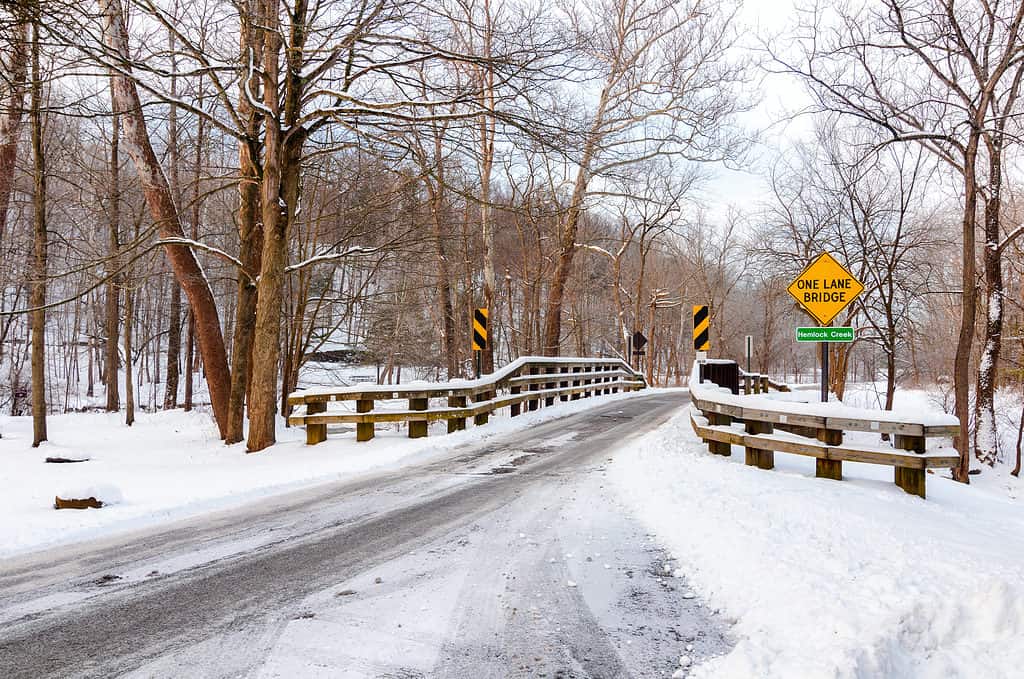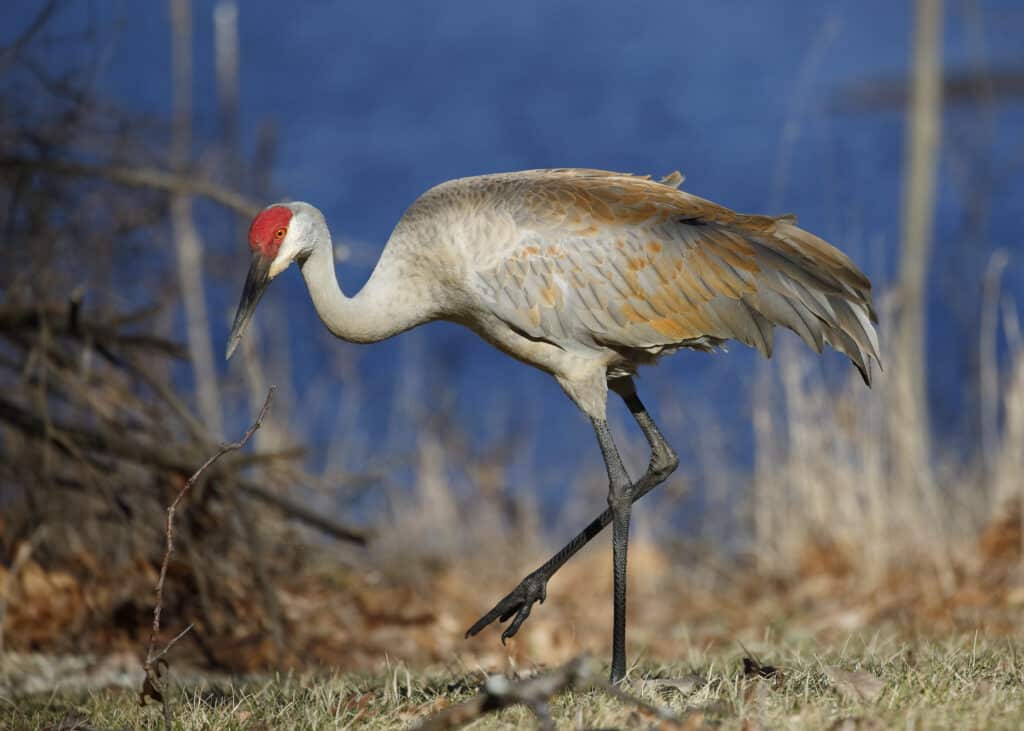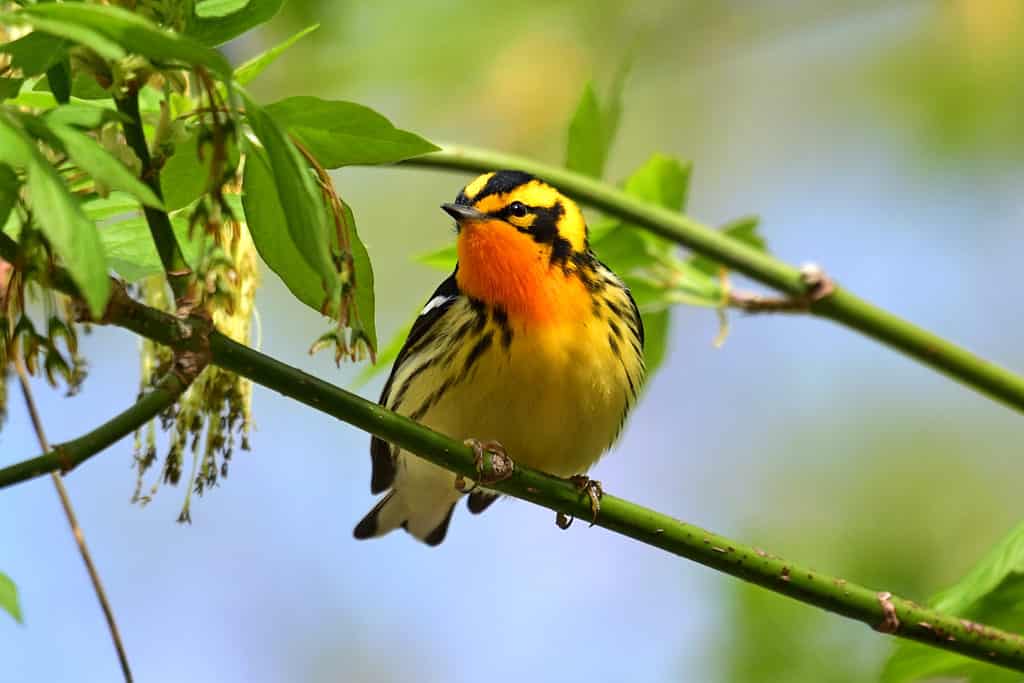Did 2023 mark Ohio’s warmest winter ever recorded? Let’s find out, plus learn some more about the state. Ohio is famously known for its Buckeye trees, earning it the nickname “Buckeye State” and its 11.8 million inhabitants “Buckeyes.” The midwestern state is the seventh most populous state and has the tenth-highest population density. Its northern boundary is Lake Erie. The state shares borders with Pennsylvania, Indiana, and Michigan in the Great Lakes area. Parts of Ohio also border West Virginia and Kentucky.
Ohio has a humid continental climate over the majority of its geographical area. However, this doesn’t include the southernmost counties of Ohio’s Bluegrass region. Instead, these counties are on the northern edge of the country’s humid subtropical climate and Upland South area.
The state has a moderate annual precipitation rate. It experiences hot, muggy summers and chilly to freezing winters. Although severe weather isn’t unusual, Ohio typically records fewer tornadoes than states in the Tornado Alley.
It’s vulnerable to extremely cold Arctic air masses in the winter and humid air masses from the Gulf of Mexico in the summer due to its inland location, mid-latitude, and lack of mountains to the north and south.
Also, Lake Erie has a significant impact on the state’s climate. Locations closer to the coastlines experience significantly warmer winters and cooler summers than those furthest from the shores.
The Great Blizzard of 1899 caused the lowest recorded temperature to occur at Milligan on February 10, 1899, at -39 °F (-39 °C). On July 21, 1934, the highest temperature on record, 113 °F (45 °C), was around Gallipolis. Let’s look at the warmest winter ever recorded in Ohio and how this compares to the 2023 winter.
Warm Winters in Ohio

The state had some snowy winters, but it wasn’t the warmest winter ever recorded in Ohio.
©Kenneth Sponsler/Shutterstock.com
Ohio’s temperatures have increased by more than 1.5°F since the turn of the 20th century. The 2000s and 2010s saw warmer temperatures than any previous time in recorded history.
More than 2°F have been added to the yearly average temperature since the 1970s. With a statewide annual average temperature of 54.1°F, 1998 was the state’s hottest year on record, according to measurements to the year 2020. 2012 had the second-highest average temperature, at 54.0°F.
Winter and spring have seen the most of this warming. Summertime temperatures in the state have not risen significantly, a phenomenon common to much of the Midwest. A lower-than-average frequency of sweltering days reflects this lack of summer warming.
Only two months have passed in 2023, yet the year has been warm at an almost record rate. Was this year the warmest winter ever recorded in Ohio? This record follows 2022, which was among the ten warmest years on record. Of course, monthly temperatures exceeding the average are not new, but our environment is warming. The last ten years have seen a continuation of this pattern.
Winter wallops in February are infamous for dropping more than a foot of snowfall and causing wind chills far below zero. Thus, the absence of snow was most apparent during the month.
Snow fans haven’t just had to deal with February’s lack of snow. Overall, snowfall this winter is still more than 2 feet below average. Although March typically receives roughly 5 inches of snow, many cities in the state would record this winter as having had the least snowfall.
With only 10 inches of snow reported thus far in Toledo, this winter is off to the slowest start to snow since 1983.
February 2023 ranked as the seventh warmest February on record in Cincinnati, with an average temperature of 42.4°F. Moreover, no measurable snow fell in February.
Only a trace of snow was recorded, officially 0.0″. 1918, 1932, 1949, and 1953 were the prior four years in which it happened. The city’s annual snowfall currently sits at 14.3″, significantly less than the typical winter snowfall. This winter in Cincinnati ranks as the eighth warmest on record, with an average temperature of 4.7°, making it the warmest winter since 1932.
Cleveland saw just 1.2 inches of snowfall the entire of February. Thus, it was the third least snowy February in the city’s history. Cleveland also had an average temperature of 38.5°F. That was the second-warmest February on record, which was more in line with March norms.
In Akron/Canton, the average temperature was 39.3°F, and just 0.6 inches of snow fell in the city. Hence, February in Akron/Canton was the second warmest and second-least snowy ever.
There was barely any snow in Mansfield, where the average temperature was 37.6°F, ranking it the least snowy on record and the second warmest. Youngstown also had its second least snowy February.
Average Highs and Lows

The warmest winter ever recorded in Ohio means a large lack of snow.
©iStock.com/aceshot
The typical average temperature in Ohio is 49.05 °F. The average high temperature is 59.3 °F while the average low is 38.8 °F. The Buckeye State receives an annual precipitation of 37.84 inches.
Animal Migration in Ohio
Many species of wildlife are drawn to the state’s diverse geography, which includes woods, grasslands, and beaches, as well as two significant water sources: Lake Erie and the Ohio River. Thus, Ohio is a crucial resting and feeding area for wildlife passing through on their spring and fall migrations or those stopping to build nests and raise their young.
According to the Ohio Department of Natural Resources Division of Wildlife (ODNR), there are limitless opportunities to see birds and other species during the winter in areas with proper habitats.
Winter is excellent for birdwatching; you should watch for relatively uncommon northern migrants such as snow buntings, pine siskins, dark-eyed juncos, Lapland longspurs, and northern shrikes.
Some Ohioan native birds, such as woodpeckers, northern cardinals, screech owls, and many hawk species, don’t migrate; they stay in the state all year.
Many migratory birds travel thousands of miles from Ohio for warmer climes and habitats with sufficient food. Some bat species, like Indiana and little brown bats, typically hibernate in southern Ohio’s cozy, dark caves or close to the Buckeye State border.
Here are some of the bird species to look out for in Ohio.
Bald Eagle
Seeing a bald eagle, one of Ohio’s most recognizable birds, in the sky never fails to thrill. The population of this predatory bird has increased in Ohio over the years. 824 breeding pairs were estimated by the spring 2022 nest survey, with Lake Erie and significant river systems having the largest densities.
Bald eagles, both mature and young, usually congregate in groups during the wintertime close to food sources. They can also be spotted busy constructing nests.
It is easy to identify adult bald eagles with white heads and tails. While the young maintain a generally brown appearance for up to five years.
Recommended viewing spots include the Metzger Marsh Wildlife Area in Ottawa County, the Delaware Wildlife Area in Delaware County, the Caesar Creek Lake Wildlife Area in Clinton, Greene, and Warren Counties, and the banks of any of Ohio’s main rivers, like the Muskingum and Scioto.
Monarch Butterfly

Monarch migration paths travel through Ohio.
©iStock.com/Elenathewise
Eastern monarch butterflies pass through Ohio on the journey from their summer breeding grounds to Mexico’s overwintering locations. Monarch migrations are among the most amazing in the animal kingdom because they can cover 50 to 100 miles daily. They might travel for thousands of kilometers before arriving at their destination.
Monarch butterflies need sufficient food supplies to fuel their migration. In addition, they get their required energy from native flowers. Monarchs may be traveling alone or in groups around Ohio; watch out for them in woodlands, fields, gardens, and water bodies. Depending on the weather, they spend a few hours or a few days.
Sandhill Crane

Sandhill cranes are often found in wetlands around Lake Erie.
©Brian Lasenby/Shutterstock.com
This large crane bird species can be found in stretches of wetlands, especially those around Lake Erie. Their unique bugling call guarantees you hear them from miles away before they are visible.
Adult sandhill cranes are easily distinguishable from the Great Blue Heron and Whooping Crane by their red crowns, despite their comparable size and color.
Known for their elegance, sandhill cranes fly with extended necks and feet following behind.
Look out for them in locations such as Ottawa National Wildlife Refuge (Ottawa County); Killbuck Marsh Wildlife Area (Holmes and Wayne counties); LaDue Public Hunting Area (Geauga and Portage counties); Killdeer Plains Wildlife Area (Wyandot and Marion counties); Funk Bottoms Wildlife Area (Wayne and Ashland counties).
Owl

Ohio has snowy owls that migrate to the state for the winter.
©iStock.com/Pasforward
Ohio is home to the barred owl and eastern screech owl throughout the year, but some owl species are only present in the winter. Snowy owls, which replace their typical Arctic tundra habitats for broad meadows and rocky shorelines, are one of the most anticipated winter migrants.
The abundance of their main prey, small rodents known as lemmings, on their hunting grounds directly correlates with the number of snowy owls in Ohio, which varies significantly yearly.
You can distinguish the diurnal owl by its predominantly white feathers and brilliant yellow, cat-like eyes in areas like Headlands Beach State Park (Lake County), Maumee Bay State Park (Lucas County), and Mosquito Creek Wildlife Area (Trumbull County).
Short-eared owls are mostly northern winter visitors. These owls are found in large regions where small mammal populations have increased, though their numbers fluctuate annually.
Short-eared owls can be found on expansive grasslands and are often seen flying at dawn and twilight with deep, languid, moth-like wingbeats. As potential locations for sighting this species, consider the Appalachian Hills Wildlife Area in Guernsey, Morgan, Muskingum, and Noble Counties, the Killdeer Plains Wildlife Area in Wyandot County, and the Crown City Wildlife Area in Gallia and Lawrence Counties.
Tundra Swan

Tundra swans are also migratory birds that flock to Ohio.
©hay_mn97/Shutterstock.com
Tundra swans embark on a fall migration to Ohio, forming flocks on lakes, open marshes, estuaries, flooded fields, and ponds. Unfortunately, these habitats are often shared with trumpeter swans, so it might be difficult to distinguish between the species.
A tundra swan can be identified by its smaller size and the yellow patch at the base of its black bill.
Although they breed in coastal Alaska and the Canadian Arctic, tundra swans migrate extensively. They spend much of the year in the far north of North America. They also travel to the Great Lakes and the coastal mid-Atlantic for the winter.
The following areas are recommended for viewing: Magee Marsh Wildlife Area (Lucas and Ottawa counties); Funk Bottoms Wildlife Area (Wayne and Ashland counties); Killdeer Plains Wildlife Area (Wyandot and Marion counties); Deer Creek Wildlife Area in Madison County.
Tropical Forest Songbirds

You can find up to 25 species of warblers, including the Blackburnian warbler, in Ohio.
©Joel Trick/Shutterstock.com
The Lake Erie shoreline is one of the best spots to bird-watch in May. Tropical forest songbirds are one of the species that stop over on the lake’s southern coast to rest and recharge before flying across Lake Erie.
The small, vibrant birds migrate from Central and South America in their millions. The Magee Marsh State Wildlife Refuge alone has experienced a springtime songbird influx of over 150 species. So it’s hardly surprising that Magee Marsh is rated one of the best birding destinations in the nation by Audubon and American Bird Conservancy.
The Kitty Todd Nature Preserve also offers views of several songbird species, including the blackpoll warbler. Blackpoll warblers embark on a spectacular migration adventure; they fly 1,800 miles directly across the Atlantic to South America.
The photo featured at the top of this post is © iStock.com/aceshot
Thank you for reading! Have some feedback for us? Contact the AZ Animals editorial team.






